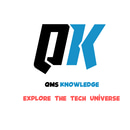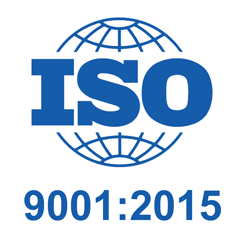Understanding Clause 4 of ISO 9001:2015 – Context of the Organization
QMS
5/29/20247 min read
Introduction to ISO 9001:2015 and Clause 4
ISO 9001:2015 is a globally recognized standard for quality management systems (QMS), developed by the International Organization for Standardization (ISO). It provides a framework that organizations can follow to ensure quality in their processes and consistently meet customer and regulatory requirements. The standard is designed to be applicable to any organization, regardless of its size, type, or the products and services it provides.
The primary objective of ISO 9001:2015 is to enhance customer satisfaction through the effective application of the system, including processes for improvement and assurance of conformity to customer and applicable statutory and regulatory requirements. By adopting ISO 9001:2015, organizations can achieve greater operational efficiency, reduce errors, and improve both internal and external communications. This standard serves as a valuable tool for organizations aiming to streamline their operations and establish a culture of continuous improvement.
Clause 4 of ISO 9001:2015, titled "Context of the Organization," is a fundamental component of the standard. This clause requires organizations to determine the internal and external factors that can impact their ability to achieve the intended outcomes of their QMS. Understanding the context of the organization is crucial because it helps in identifying risks and opportunities that could affect the organization's strategic direction and quality objectives.
By comprehensively analyzing the context in which they operate, organizations can better align their QMS with their strategic goals and the expectations of interested parties, such as customers, suppliers, and regulatory bodies. This alignment ensures that the QMS is not only a set of procedures but an integral part of the organization's overall strategy. Effective implementation of Clause 4 enables organizations to proactively address potential challenges and leverage opportunities, thereby enhancing their resilience and adaptability in a dynamic business environment.
Clause 4.1: Understanding the Organization and Its Context
Clause 4.1 of ISO 9001:2015 emphasizes the necessity for organizations to comprehend both external and internal issues that could impact their strategic direction and the effectiveness of their Quality Management System (QMS). This understanding is pivotal for achieving the intended outcomes of the QMS and aligning it with the organization’s objectives.
External issues encompass factors outside the organization that could influence its operations and strategic goals. These include market trends, which can dictate demand for products or services; regulatory changes, which may impose new compliance requirements; and economic conditions, which can affect financial stability and investment decisions. For instance, a shift in consumer preferences towards sustainable products could necessitate changes in production processes, while new legislation might require updates to compliance procedures. Additionally, economic downturns could lead to budget constraints, impacting resource allocation.
Internal issues, on the other hand, pertain to factors within the organization. This includes organizational culture, which shapes employee behavior and attitudes towards quality and continuous improvement. Resources, such as human capital, technology, and infrastructure, are also critical as they determine the organization’s capability to implement and maintain the QMS. For example, a skilled workforce is essential for executing quality processes effectively, while advanced technology can streamline operations and enhance quality control. Moreover, internal capabilities, including management systems and operational efficiencies, play a significant role in achieving quality objectives.
Recognizing and addressing these external and internal issues enable organizations to proactively mitigate risks and capitalize on opportunities, ensuring the QMS remains robust and effective. This holistic approach not only supports compliance with ISO 9001:2015 but also fosters a strategic alignment between the QMS and the organization’s overall goals, driving sustained improvement and competitive advantage.
Clause 4.2: Understanding the Needs and Expectations of Interested Parties
Clause 4.2 of ISO 9001:2015 necessitates that organizations identify the interested parties that are relevant to their Quality Management System (QMS) and comprehend their needs and expectations. An "interested party" can be any individual or entity that can affect, be affected by, or perceive itself to be affected by a decision or activity of the organization. This broad definition encompasses a variety of stakeholders, including but not limited to customers, suppliers, employees, regulatory bodies, and other stakeholders.
Customers, for instance, are perhaps the most critical interested parties as their satisfaction directly impacts the organization's success. Understanding customer needs and expectations can lead to improvements in product quality, customer service, and overall customer satisfaction. Suppliers, on the other hand, play a crucial role in the supply chain and production process. By recognizing and addressing supplier expectations, organizations can foster more reliable and efficient partnerships, which in turn can enhance product quality and delivery timelines.
Employees are also vital stakeholders whose needs and expectations regarding job security, work conditions, and career development can significantly influence the organization's performance. Addressing these needs can lead to increased employee morale, productivity, and retention. Regulatory bodies impose compliance requirements that organizations must meet to operate legally and ethically. Understanding these requirements helps in maintaining compliance and avoiding legal penalties.
Other stakeholders might include investors, local communities, and industry associations. Each of these parties has unique expectations that, when met, can contribute to the organization's long-term sustainability and reputation. By systematically identifying and understanding the needs and expectations of these interested parties, an organization can make informed decisions that align with its strategic objectives.
Ultimately, recognizing and addressing the needs and expectations of interested parties is essential for the effectiveness of the QMS. It ensures that the organization remains aligned with external and internal requirements, thereby enhancing its overall performance and resilience in a competitive market environment.
Clause 4.3: Determining the Scope of the Quality Management System
Clause 4.3 of ISO 9001:2015 plays a critical role in shaping the Quality Management System (QMS) by defining its scope. This clause requires organizations to establish the boundaries and applicability of the QMS, ensuring it is appropriately tailored to their specific context. Several factors need to be considered when defining the scope, prominently including the external and internal issues identified in Clause 4.1 and the needs and expectations of interested parties discussed in Clause 4.2.
The process begins with a thorough understanding of the external and internal issues that can impact the organization’s ability to achieve the intended outcomes of its QMS. External issues may encompass regulatory requirements, market conditions, and technological advancements, while internal issues could involve organizational culture, resource availability, and operational processes. Recognition of these issues enables the organization to establish a QMS scope that is both comprehensive and relevant.
In addition to these issues, the organization must consider the needs and expectations of interested parties, as outlined in Clause 4.2. Interested parties may include customers, suppliers, employees, and regulatory bodies. Their requirements and expectations can significantly shape the QMS's focus areas, ensuring that it addresses all pertinent aspects that influence the organization’s quality performance. By integrating these considerations, the scope of the QMS can be more effectively aligned with the organization’s strategic objectives and operational realities.
Clearly defining the scope of the QMS is crucial for several reasons. It ensures that all relevant processes, products, and services are included within the QMS, providing a structured framework for achieving quality objectives. It also helps in identifying any exclusions or limitations, which must be justified and documented. A well-defined scope facilitates better planning, implementation, and monitoring of the QMS, ultimately leading to enhanced customer satisfaction and continuous improvement.
In conclusion, Clause 4.3 serves as a cornerstone in developing a robust QMS by mandating a clear and comprehensive definition of its scope. By considering external and internal issues, along with the needs and expectations of interested parties, organizations can ensure their QMS is effectively tailored to their unique context, paving the way for sustained quality excellence.
Clause 4.4: The Quality Management System and Its Processes
Clause 4.4 of ISO 9001:2015 emphasizes the necessity of establishing, implementing, maintaining, and continually improving a Quality Management System (QMS) along with its processes. This clause mandates a process-based approach, which involves identifying and managing various interrelated processes within the organization to ensure they function cohesively. Adopting a process-based approach is crucial for consistent quality and facilitates continuous improvement.
Organizations are required to determine the processes needed for their QMS and understand how these processes interact. This involves defining inputs, outputs, sequences, and interactions. Additionally, organizations must establish criteria and methods to ensure effective operation and control of these processes. Performance indicators and monitoring mechanisms are essential to assess process efficiency and effectiveness continually.
By identifying and managing processes, organizations can achieve a more structured and systematic approach to quality management. This methodology ensures that all activities contributing to product or service quality are aligned and optimized. It also aids in identifying areas for improvement, allowing organizations to implement corrective actions proactively.
The process-based approach underscores the importance of understanding the interdependencies among various processes. This holistic perspective ensures that changes or improvements in one area do not adversely affect others. It also facilitates a more comprehensive understanding of how processes contribute to overall organizational objectives and customer satisfaction.
Moreover, Clause 4.4 requires organizations to maintain documentation that supports the operation of these processes. Documented information serves as evidence of process conformance and provides a basis for audit and review. This documentation should be current, accessible, and adequately controlled to ensure its effectiveness.
Overall, by adhering to Clause 4.4, organizations can establish a robust framework that not only enhances quality but also fosters a culture of continuous improvement. This strategic approach ultimately leads to higher customer satisfaction and better business performance.
Practical Steps for Implementing Clause 4
Implementing Clause 4 of ISO 9001:2015, which focuses on the context of the organization, requires a structured approach. This clause mandates a comprehensive understanding of internal and external factors that can impact the Quality Management System (QMS). Here are practical steps to ensure effective implementation:
1. Conduct a SWOT Analysis: Start by performing a SWOT (Strengths, Weaknesses, Opportunities, Threats) analysis to identify internal and external issues. This analysis will help you understand the factors that can affect your organization’s ability to achieve its objectives. Document the results and use them to inform your strategic planning and QMS processes.
2. Engage with Stakeholders: It is crucial to identify and engage with relevant stakeholders to understand their needs and expectations. Stakeholders can include customers, suppliers, employees, and regulatory bodies. By gathering their input, you can ensure that your QMS aligns with their requirements and expectations, leading to enhanced satisfaction and compliance.
3. Define the Scope of the QMS: Clearly define the scope of your Quality Management System. This involves specifying the boundaries and applicability of the QMS in relation to your organization’s operations. Consider factors such as the nature of your products and services, the operational context, and any regulatory requirements.
4. Map Out Key Processes: Identify and map out the key processes within your organization that are critical to meeting QMS objectives. This includes understanding the sequence and interaction of these processes. Process mapping helps in identifying areas for improvement and ensures that all processes are aligned with the overall QMS requirements.
5. Maintain Documentation: Proper documentation is essential for demonstrating compliance with Clause 4. Ensure that all relevant information, including the results of the SWOT analysis, stakeholder requirements, scope, and process maps, is documented and readily available. This documentation should be reviewed and updated regularly to reflect any changes in the organizational context.
6. Ongoing Evaluation and Adjustment: Implement a system for continuous evaluation and adjustment of your QMS. Please look over internal and external issues, stakeholder needs, and the effectiveness of your processes. This ongoing evaluation ensures that your QMS remains relevant and aligned with Clause 4 requirements, enabling your organization to adapt to changing circumstances effectively.
By following these practical steps, organizations can effectively implement Clause 4 of ISO 9001:2015 and ensure that their QMS is robust, responsive, and capable of meeting both current and future challenges.


